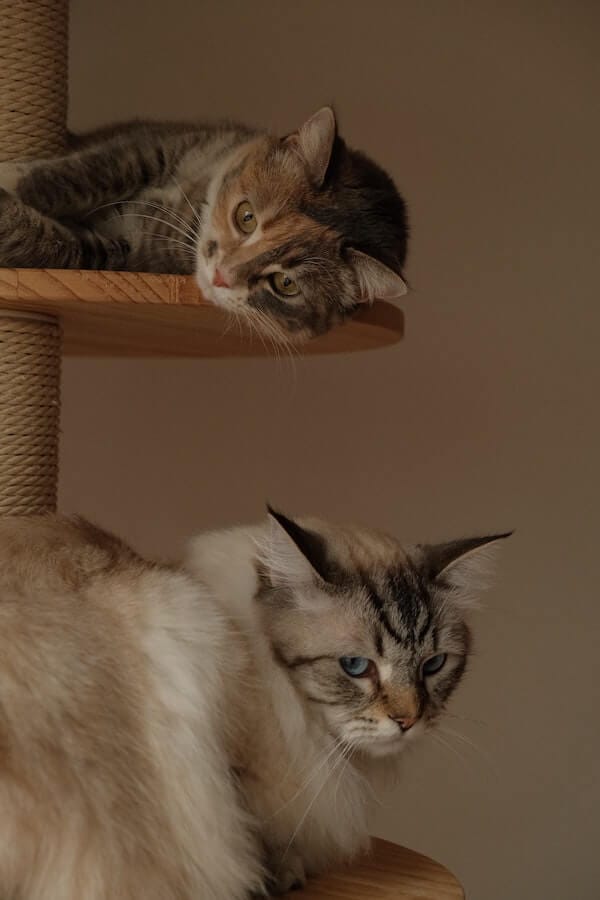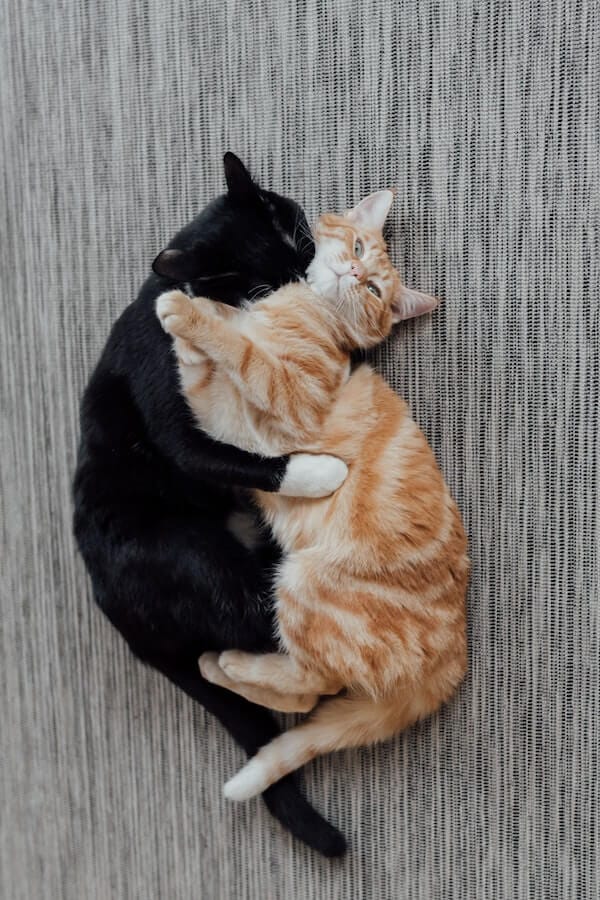
If you’ve ever owned cats, you know all too well the sight of two felines brawling like a couple of wild animals.
Despite their often snuggly and affectionate nature, sometimes cats just can’t seem to get along.
Whether it’s due to territorial disputes or simply two personalities that don’t mesh, cat owners have had to grapple with the issue of cats not getting along for centuries.
Fortunately, there are ways to try and combat this problem and bring peace back into your household!
Understanding feline behavior and introducing specific activities designed to help them bond better can go a long way in helping them peacefully coexist.
How do you know if two cats hate each other?
Cats can also experience conflicts with each other, so it’s important to know how to tell when two cats aren’t on the best terms. Here are five signs that your felines aren’t fond of each other:
1. Avoidance
If one cat is actively avoiding another, this could be a sign that they don’t like each other. Pay attention to where the cats hang out and whether their paths cross or if there’s a clear divide in the territory.
2. Hissing/Growling
Aggressive vocalization is a surefire sign of dislike between two cats. If you hear hissing or growling coming from the same room, it may be a sign that your kitties aren’t getting along.
3. Raised Fur
This is another sign of aggression between two cats.
If you notice that one or both cats have raised their fur when in the same space, this could indicate that they are feeling defensive and/or hostile towards each other.
4. Refusing Food
Cats can be very territorial over their food bowls, if one cat appears to refuse food when the other is around then it’s possible they don’t get along very well.
5. Physical Altercations
If there is any physical contact such as swatting or biting between the cats, then this shows an extreme amount of hostility.
If you notice any physical fighting between the cats, it’s important to remove them from each other and take steps to reduce their tension.

How do you deal with cats not getting along?
There are a variety of ways to handle cats not getting along, but it all boils down to making the environment as stress-free and comfortable.
Here are 10 tips to make peace between felines:
1. Create separate spaces:
Provide both cats with their own space where they can relax and feel safe.
Make sure each cat has access to plenty of resources, such as litter boxes, food and water dishes, toys, scratching posts, beds or baskets, etc.
2. Provide plenty of enrichment and stimulation:
To keep cats entertained and create positive associations with each other, provide enrichment activities for both of them.
This could include toys they can play with alone or together, as well as interactive toys or puzzles that require problem-solving skills.
3. Establish a litter box routine:
Cats are very particular about their toileting habits. Make sure the litter boxes are kept clean, in separate but nearby areas to minimize stress from territorial conflicts.
4. Separate feeding times:
Feeding them at different times allows them to eat without feeling threatened by the other cat.
Additionally, consider feeding cats in separate rooms if possible to prevent conflicts over resources such as food bowls or water dishes.
5. Bond cats slowly:
Gradually expose the cats to each other in a safe and controlled environment with plenty of positive reinforcement.
This can include playing games together, providing food or toys when they’re near each other, and rewarding them for calm behavior around one another.

6. Provide visual barriers:
Physical barriers such as baby gates allow cats to see each other without feeling threatened or exposed, reducing stress levels for both of them.
7. Make use of calming products:
Sprays, diffusers, or wipes containing natural calming ingredients like lavender or chamomile can help create a peaceful atmosphere that promotes acceptance between cats.
8. Create distraction zones:
Keep them occupied by creating distraction zones or play areas where they can have fun and explore together.
This could include hiding treats or toys for them to find, setting up tunnels to run through, or providing cat trees that encourage climbing and exploration.
9. Use positive reinforcement:
Reward them when they are calm and engaging in activities together, such as playing with a toy or grooming each other.
This help creates positive associations with one another and reinforces good behavior while reducing stress levels.
10. See your vet:
If all else fails, see a veterinarian to identify the underlying cause of the conflict and develop a plan that works for both cats.
By consulting an expert, you can ensure that both are healthy and happy.

Conclusion
Cats not getting along is a common issue among cat owners, but it’s one that can be solved with patience and understanding.
Before getting a second cat you must be aware of the fact that they might or might not get along with each other.
By implementing the tips above, you can help create a peaceful environment for both felines to coexist in harmony.
Remember: Rome wasn’t built in a day! So don’t expect your furry friends to bond instantly, but with time and effort they will eventually become fond of each other.
- 7 Dog Breeds With Webbed Feet And Why Do They Have Them - July 19, 2023
- 10 Best Fish For Small Tanks That Make Perfect Pets - July 18, 2023
- How to Breed Guinea Pigs: A Detailed Guide - July 17, 2023


GIPHY App Key not set. Please check settings